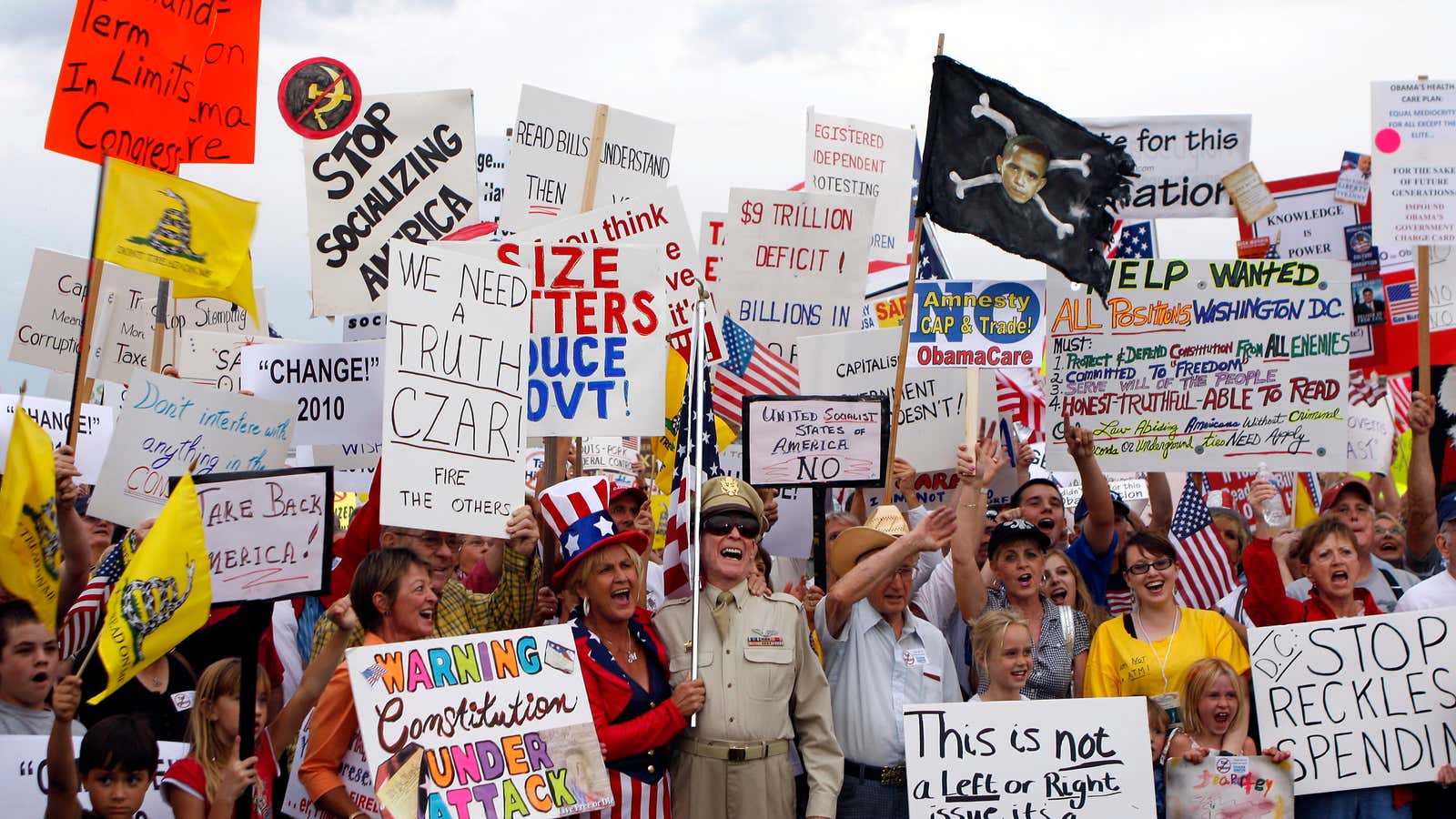This year has seen a surge in anti-China rhetoric in the United States—and it’s not entirely because of election-cycle pandering.
New research links the the surge in Chinese imports since 2000 to an increase in polarization: The tendency to favor candidates at the “extremes of their respective parties”—mostly conservative Republicans.
The researchers—from MIT, the University of Zurich, and other institutions—have developed a new dataset of local trade impact that questions the conventional wisdom about free trade’s benefits. They look only at the impact on jobs, not the benefits to consumers or investors.
In their view, the shock of China’s dramatic entrance to the world goods market was unexpectedly large and rapid, overwhelming labor market adjustments that economists expected. The team previously concluded (pdf) that between 1999 and 2011, the US lost between 560,000 and 980,000 manufacturing jobs due to Chinese imports.
Manufacturing employment in the US contracted by 5.8 million jobs in that span, suggesting that Chinese competition was only one factor. But the authors make the case that the specific impacts from China trade tend to be localized and long-lasting, affecting more than two million Americans.
The research is the latest from David Autor, David Dorn, Gordon Hanson and Kavesh Majlesi. In their new working paper (pdf), they take data on US communities and match it up against the voting records of US legislators, ranked by ideology. They found that increased trade impact between 2002 and 2010 led to a higher likelihood of conservative Republicans being elected, at the expense of moderate Democrats and Republicans.
Interestingly, they found that the trade effects didn’t lead to an increase in anti-incumbent feeling or a direct rejection of either party. Instead, Republican districts affected by trade were more likely to put a conservative Republican in office, and Democratic districts were likely to elect either a liberal Democrat or a conservative Republican.
The study found that about “three quarters of the movement away from the political center” was the result of increasingly conservative representatives, while one quarter was due to increasingly liberal legislators.
This sorting isn’t the prime explanation for Republican control of the House, though it helps. A New York Times analysis of the data suggests that if trade with China was cut in half during the years between 2002 and 2010, Democrats would hold 12 more seats, which isn’t a big dent in their current 58-seat deficit.
Rather, this polarization is the reason that the Republican-controlled House can’t seem to get anything done. The growth in conservative members created a dynamic where GOP leaders could not make deals with Democrats in the center—on, say immigration reform—even as they lacked the political power to enact their own agenda.
Consider that trade-affected districts were 12 percentage points more likely to elect a member of the Tea Party. The Times analysis suggests that trade added more than 18 conservative Republicans to the House by 2010. For comparison, that’s the bulk of the 25 or so conservative rebels who voted to unseat former House Speaker John Boehner, a harbinger of his eventual decision to resign.
Of course, trade doesn’t explain all of today’s political polarization. Growing income inequality and the changing demographics of the US each play major and inter-connected roles. But this research makes a convincing case that trade with China has created a seismic change in US politics.
